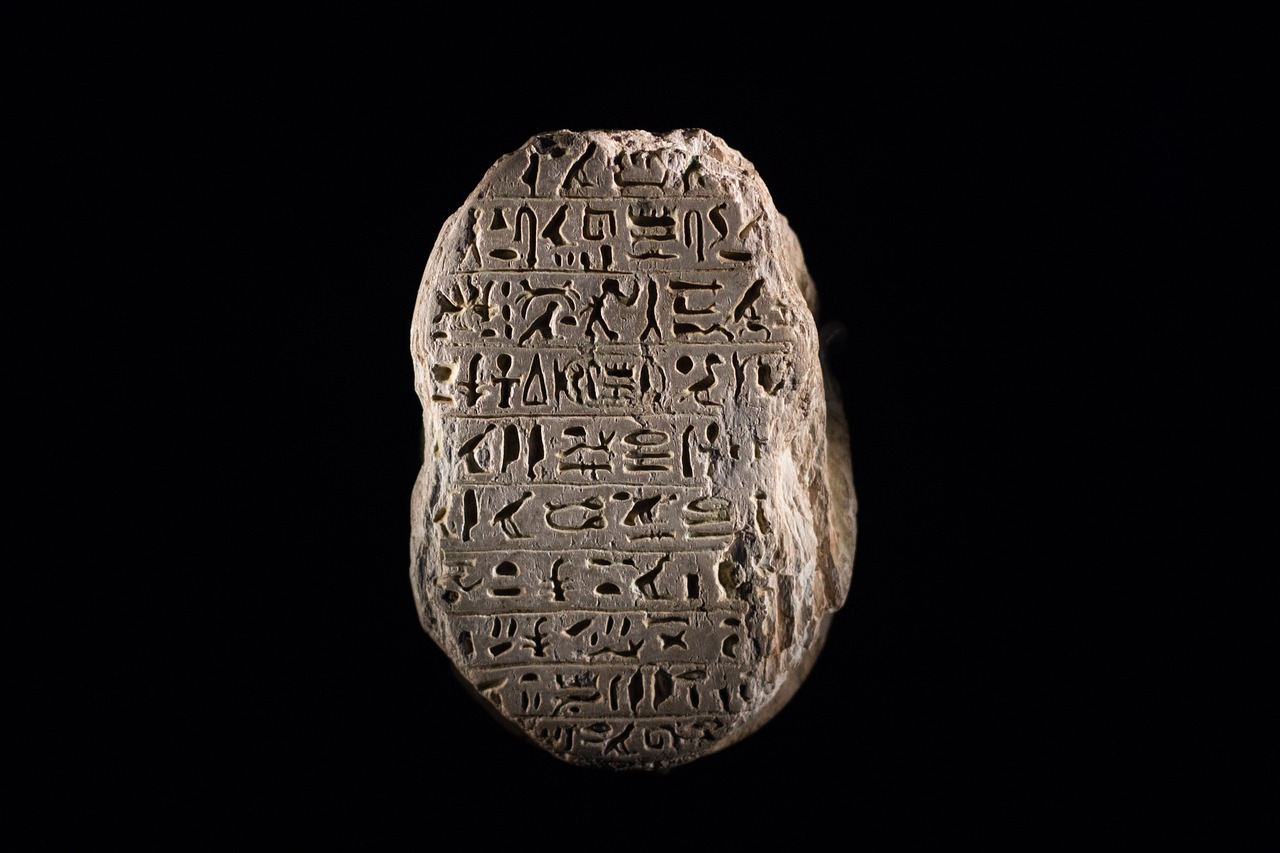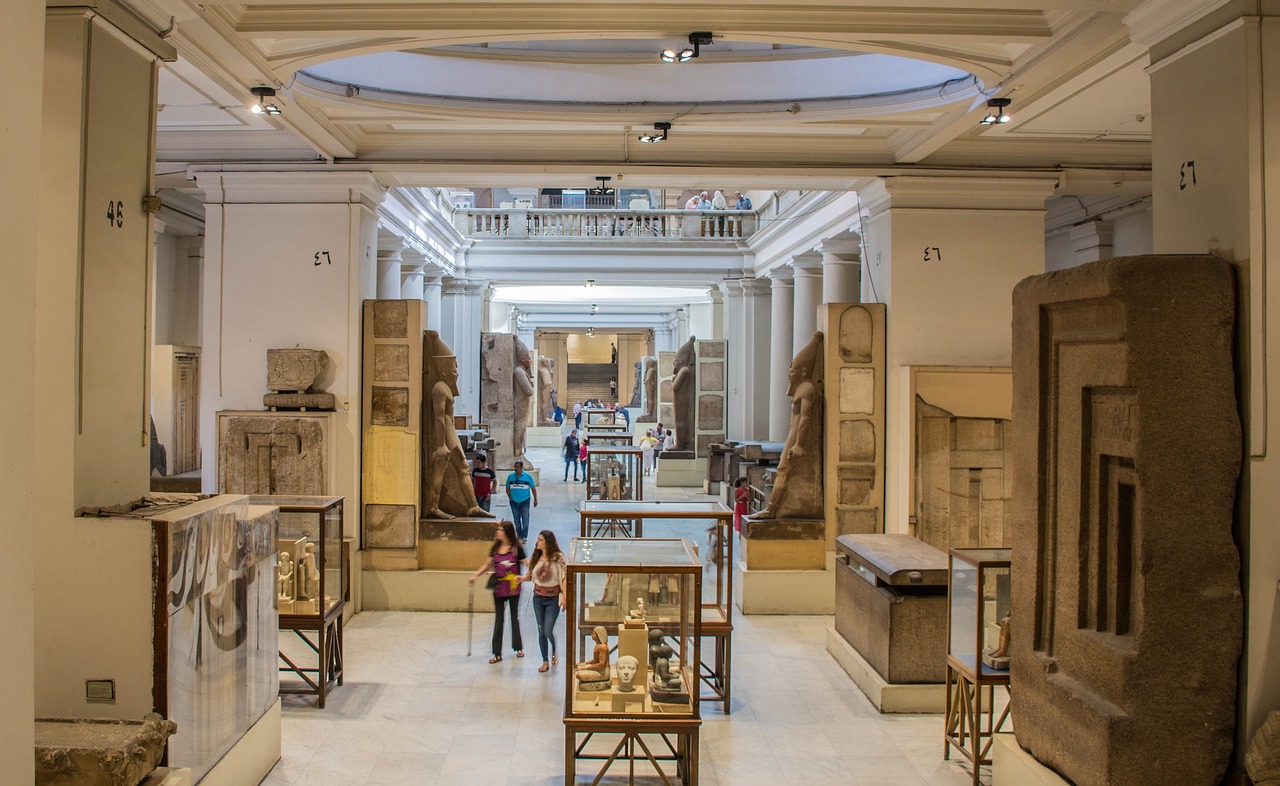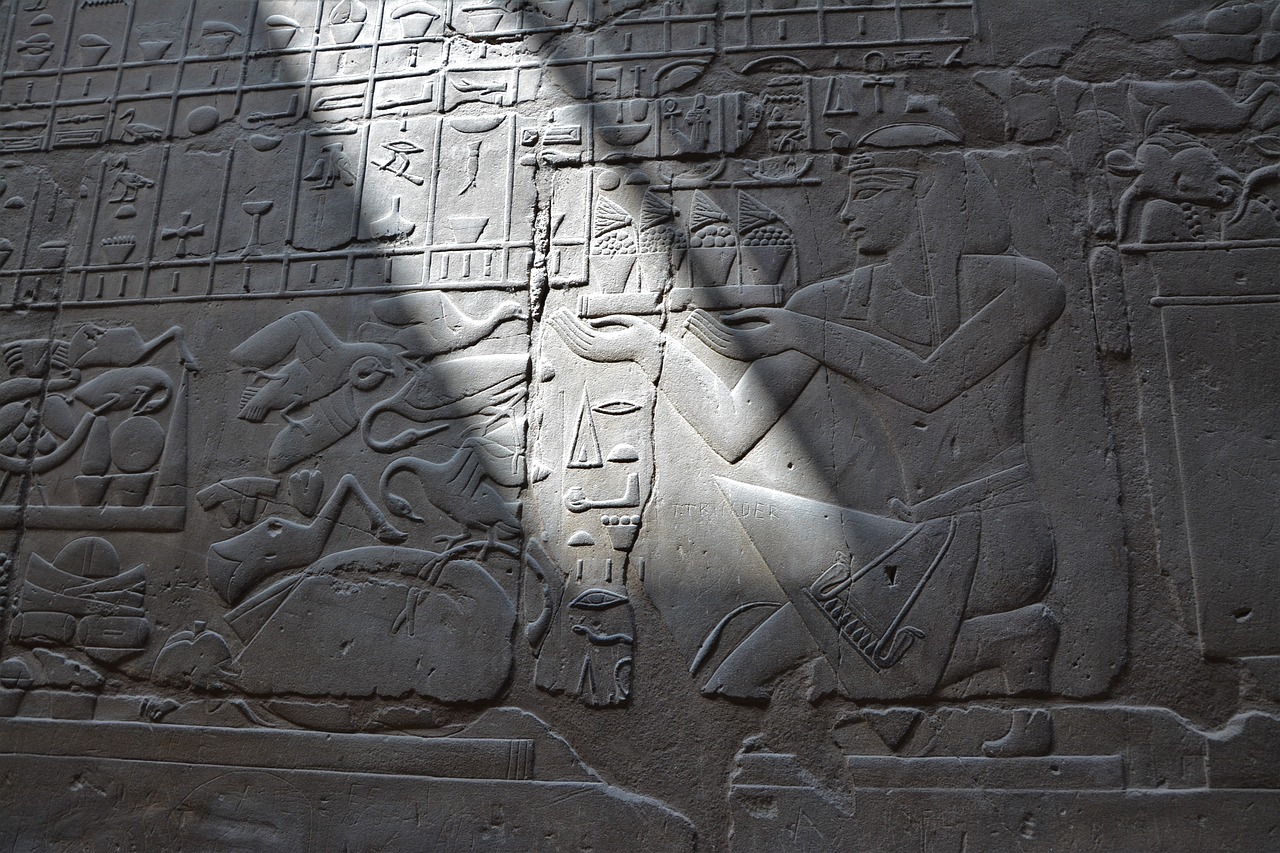The Enigma of the Ancient Egyptian Labor Systems
Have you ever wondered how the ancient Egyptians managed to construct the awe-inspiring pyramids that still stand tall today, thousands of years later? The labor systems of ancient Egypt hold a mysterious enigma, shrouded in the sands of time yet whispering secrets of a workforce that propelled one of the greatest civilizations in history to unparalleled heights.

Organization of Labor
When delving into the intricate workings of the ancient Egyptian labor systems, one cannot help but marvel at the organizational prowess that facilitated the construction of monumental structures and sustained a thriving civilization. The organization of labor in ancient Egypt was a meticulously structured system, where each individual played a crucial role in the grand scheme of things.
At the core of this organization were overseers who supervised and coordinated the efforts of craftsmen and laborers. These overseers were responsible for allocating tasks, ensuring productivity, and maintaining order at construction sites and agricultural projects. Craftsmen, skilled in various trades such as stonemasonry and carpentry, were instrumental in bringing intricate designs to life, while laborers toiled tirelessly to execute the vision of the architects and engineers.
Tasks were allocated based on the skills and social status of the workers, with each group contributing to the overall success of the project. The division of labor allowed for specialization, efficiency, and the seamless coordination of efforts, leading to the timely completion of ambitious undertakings such as the construction of the pyramids.
Furthermore, the organization of labor in ancient Egypt was not limited to construction projects alone. In agriculture, laborers worked in unison to cultivate the fertile lands along the Nile, utilizing advanced irrigation methods to ensure bountiful harvests year after year.
Despite the challenges posed by working in extreme heat and hazardous conditions, ancient Egyptian laborers persevered under the watchful eyes of taskmasters. These overseers enforced discipline, maintained productivity, and ensured that deadlines were met, driving the workforce to achieve remarkable feats of engineering and agriculture.

Tools and Techniques
Exploring the mysteries surrounding how the labor systems of ancient Egypt were organized and operated, shedding light on the workforce that built the pyramids and sustained one of the greatest civilizations in history.
Investigating how labor was structured and managed in ancient Egypt, including the roles of overseers, craftsmen, and laborers in various construction and agricultural projects.
Exploring the tools, techniques, and technologies used by ancient Egyptian laborers in their daily work, from quarrying stone to irrigation methods in agriculture.
Ancient Egyptian laborers were skilled in using a variety of tools and techniques to accomplish their tasks efficiently. Tools such as chisels, hammers, and saws were essential for stone masonry, while shovels and hoes were used in agricultural activities. The techniques employed by these laborers were advanced for their time, allowing them to carve intricate hieroglyphs on temple walls and construct massive pyramids with precision.
Moreover, the ancient Egyptians were adept at utilizing simple machines like levers and pulleys to move heavy objects and lift stones during construction projects. These innovative methods enabled them to overcome the challenges posed by large-scale building endeavors and agricultural operations.
Examining how tasks were divided among different groups of workers based on their skills and social status, contributing to the efficient completion of monumental projects.
Discussing the working conditions faced by laborers in ancient Egypt, including the challenges of working in extreme heat, dangerous environments, and under the supervision of taskmasters.
Analyzing the controversial role of slavery in the ancient Egyptian labor force, exploring how enslaved individuals were utilized in various sectors of the economy.
Explaining the connection between trade networks and labor systems in ancient Egypt, highlighting how commerce influenced the demand for labor and the movement of workers.
Reflecting on the enduring impact of ancient Egyptian labor systems on modern understandings of workforce organization, management, and the construction of monumental structures.
Delving into the unresolved questions and enigmas surrounding the ancient Egyptian labor systems, prompting ongoing research and debate among historians and archaeologists.
Stay tuned for answers to common queries about the ancient Egyptian labor systems!

Division of Labor
When it comes to the ancient Egyptian labor systems, the division of labor played a crucial role in the successful completion of monumental projects that continue to captivate the world today. The organization of tasks among different groups of workers was a well-structured process that ensured efficiency and precision in construction and agriculture.
Skilled craftsmen, overseers, and laborers each had distinct roles and responsibilities within the labor hierarchy. Craftsmen, known for their expertise in stone carving, painting, and other specialized fields, were essential for the intricate details of architectural marvels like the pyramids. Overseers, on the other hand, supervised and coordinated the activities of laborers, ensuring that the work progressed smoothly and according to plan.
Within the division of labor, tasks were allocated based on the skills and social status of the workers. Skilled artisans were entrusted with intricate carving and detailing work, while laborers focused on tasks requiring physical strength and endurance. This systematic approach to task allocation contributed to the overall efficiency of the workforce, allowing for the timely completion of massive construction projects.
Moreover, the division of labor extended beyond construction projects to agricultural activities essential for sustaining the ancient Egyptian civilization. Farmers, laborers, and irrigation specialists worked in harmony to cultivate the fertile lands along the Nile, utilizing advanced irrigation techniques to ensure bountiful harvests year after year.
By dividing tasks among specialized groups of workers, the ancient Egyptians were able to harness the collective skills and strengths of their labor force, resulting in the creation of architectural wonders and the development of a thriving agricultural economy.

Working Conditions
Working conditions for laborers in ancient Egypt were undoubtedly challenging, as they toiled under the scorching sun to construct monumental structures and cultivate the fertile lands along the Nile. The harsh environment posed significant obstacles, requiring workers to endure extreme heat and physically demanding tasks.
Taskmasters, or overseers, closely monitored the laborers, ensuring that the work progressed according to schedule and quality standards. These supervisors held considerable authority over the workers, maintaining discipline and efficiency on construction sites and agricultural fields.
Moreover, the dangerous nature of certain tasks, such as quarrying stone or handling heavy materials, added an element of risk to the laborers' daily routines. Accidents were not uncommon, highlighting the perilous conditions under which these ancient workers operated.
Despite these challenges, the laborers persevered, driven by a sense of duty and the promise of sustenance for themselves and their families. The resilience and dedication of these individuals underscore the remarkable feats achieved by the ancient Egyptian workforce.
Additionally, the working conditions also varied depending on the specific roles within the labor hierarchy. While skilled craftsmen may have enjoyed certain privileges or accommodations, lower-ranking laborers faced more arduous tasks and less favorable conditions.
In essence, the working conditions in ancient Egypt reflected a complex interplay of environmental factors, social dynamics, and economic imperatives, shaping the daily experiences of the labor force that propelled one of the greatest civilizations in history.

Role of Slavery
In ancient Egypt, the role of slavery was a complex and controversial aspect of the labor force. Slavery played a significant role in various sectors of the economy, providing a source of cheap labor for construction projects, agricultural activities, and domestic services. Enslaved individuals were often acquired through warfare, debt, or as a form of punishment. They were considered the property of their owners and had limited rights and freedoms. Despite the harsh conditions they faced, enslaved laborers were crucial in the execution of monumental tasks such as building the pyramids and temples. The use of enslaved individuals raised ethical questions about the treatment of workers and the power dynamics within Egyptian society.

Trade and Labor
Trade and labor were intricately intertwined in the ancient Egyptian civilization, forming a symbiotic relationship that fueled the economy and facilitated the construction of monumental structures. The bustling trade networks of ancient Egypt not only connected distant regions but also influenced the demand for labor across various sectors. As goods flowed along the Nile River and through caravan routes, the need for skilled craftsmen, laborers, and overseers grew, shaping the labor landscape of the time.
Merchants and traders played a pivotal role in linking different regions of Egypt, fostering the exchange of goods and ideas that spurred economic growth. The abundance of resources such as gold, precious stones, and agricultural products attracted merchants from neighboring lands, creating a vibrant marketplace where laborers found employment opportunities. This influx of trade not only enriched the economy but also diversified the skills and expertise of the labor force.
Furthermore, the connection between trade and labor extended beyond domestic borders, with Egypt engaging in commerce with foreign nations such as Mesopotamia, Nubia, and the Levant. Through these trade relationships, the labor systems of ancient Egypt were influenced by external practices and technologies, enriching the knowledge base of workers and enhancing the efficiency of construction projects.
Trade routes not only facilitated the exchange of goods but also served as conduits for the movement of laborers across different regions. Skilled workers were often sought after in distant lands for their expertise in masonry, carpentry, and other specialized fields. This mobility of labor not only enriched the cultural exchange but also contributed to the dissemination of architectural techniques and construction methods.
In conclusion, the intricate interplay between trade and labor in ancient Egypt highlights the dynamic nature of workforce organization and economic development during that era. The legacy of these interconnected systems continues to resonate in modern understandings of global trade, labor mobility, and the enduring impact of commerce on shaping civilizations.

Legacy of Labor Systems
When examining the in ancient Egypt, one cannot help but marvel at the profound impact it has had on modern workforce organization and management practices. The meticulous planning, coordination, and execution of labor-intensive projects such as the construction of the pyramids serve as a testament to the ingenuity and efficiency of the ancient Egyptian labor systems.
A key aspect of the legacy lies in the strategic allocation of tasks based on individual skills and expertise, a practice that continues to influence contemporary project management methodologies. The division of labor among craftsmen, laborers, and overseers ensured that each worker contributed effectively to the overall success of monumental undertakings.
Moreover, the emphasis on precision and quality in craftsmanship, evident in the intricate designs and structures left behind by ancient Egyptian laborers, serves as a timeless reminder of the importance of attention to detail and excellence in workmanship.
Furthermore, the legacy of ancient Egyptian labor systems extends to the realm of workforce diversity and inclusivity. The inclusion of workers from various social strata and backgrounds in construction and agricultural projects highlights the value placed on leveraging a diverse range of skills and perspectives for collective achievement.
Through their enduring architectural marvels and agricultural innovations, the labor systems of ancient Egypt continue to inspire contemporary discussions on collaboration, efficiency, and the enduring legacy of human ingenuity across generations and civilizations.

Unsolved Mysteries
Delving into the mysteries of ancient Egyptian labor systems unveils a tapestry of enigmas that continue to intrigue historians and archaeologists alike. One of the most perplexing questions revolves around the precise organization of labor within the ancient Egyptian society. How were tasks allocated, and what determined the division of labor among different groups of workers? These unresolved mysteries spark curiosity and drive ongoing research to uncover the secrets of the past.
Another enigma shrouding the ancient Egyptian labor systems pertains to the tools and techniques employed by laborers in their daily endeavors. From the intricate methods of quarrying stone for monumental construction projects to the sophisticated irrigation systems utilized in agriculture, the precise details of these ancient technologies remain a subject of speculation and fascination. Unraveling the secrets of these tools could offer profound insights into the capabilities and ingenuity of the ancient workforce.
The role of slavery in ancient Egyptian labor systems presents yet another puzzle for historians to unravel. How were enslaved individuals integrated into the workforce, and to what extent did their labor contribute to the economic prosperity of the civilization? Exploring the dynamics of slavery in ancient Egypt raises complex ethical and historical questions, shedding light on the intricate web of social relationships that defined the labor landscape of the time.
Moreover, the enduring legacy of ancient Egyptian labor systems raises intriguing questions about the lasting impact of these organizational structures on modern concepts of workforce management. How have the practices and principles of labor organization in ancient Egypt influenced contemporary approaches to project management and labor allocation? Unraveling these connections offers a glimpse into the timeless wisdom embedded in the labor systems of one of history's most remarkable civilizations.
As historians and archaeologists continue to unearth new discoveries and insights into the ancient Egyptian labor systems, one overarching mystery remains: What secrets are still buried beneath the sands of time, waiting to be revealed? The enigmatic nature of these labor systems serves as a testament to the enduring allure of ancient civilizations and the boundless possibilities for discovery that lie within their mysteries.
Frequently Asked Questions
- What was the role of overseers in the ancient Egyptian labor system?
In ancient Egypt, overseers played a crucial role in managing and supervising laborers across various projects. They were responsible for organizing tasks, ensuring productivity, and maintaining order within the workforce.
- How were tasks divided among different groups of laborers in ancient Egypt?
Tasks in ancient Egypt were divided based on the skills and social status of the workers. Skilled craftsmen were assigned intricate jobs such as carving hieroglyphics, while laborers focused on tasks like moving heavy stones or clearing debris.
- What were some of the tools and techniques used by ancient Egyptian laborers?
Ancient Egyptian laborers utilized tools such as chisels, hammers, and sledges for construction projects, while in agriculture, they employed irrigation techniques like the shaduf to water crops efficiently in the arid climate.
- Did slavery play a significant role in the ancient Egyptian labor force?
Slavery was indeed present in ancient Egypt and slaves were utilized in various sectors of the economy, including construction, agriculture, and domestic service. Their labor contributed to the monumental projects and daily tasks of the civilization.
- How did trade networks influence labor systems in ancient Egypt?
Trade networks in ancient Egypt facilitated the movement of goods and resources, which in turn affected the demand for labor. The exchange of commodities influenced the workforce needed for production, transportation, and trade activities.
- What are some of the enduring legacies of ancient Egyptian labor systems?
The labor systems of ancient Egypt have left a lasting impact on modern understandings of workforce organization and management. The efficient division of labor, use of technology, and project coordination continue to inspire contemporary practices.



















